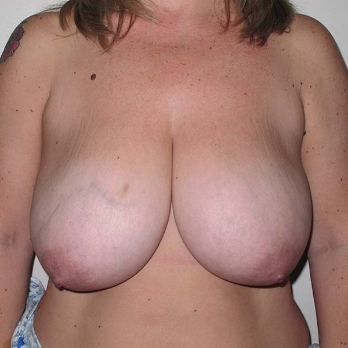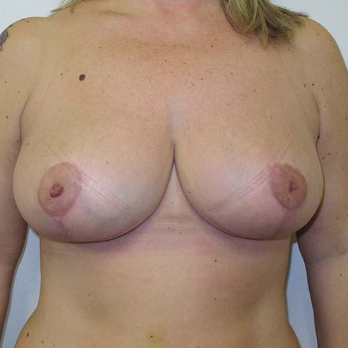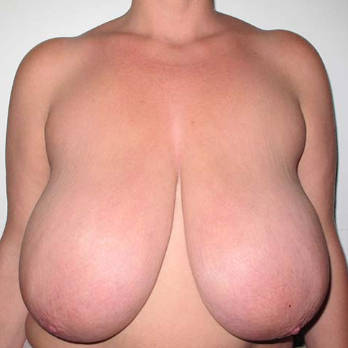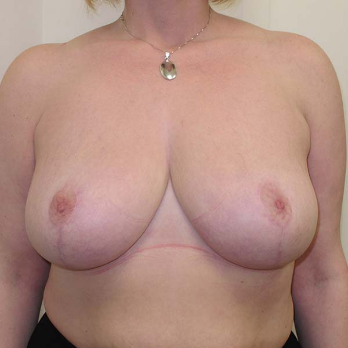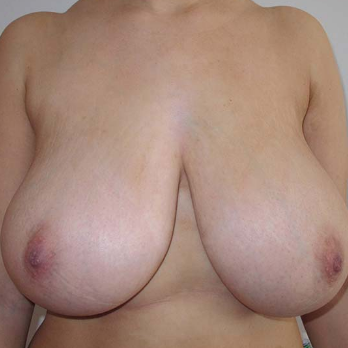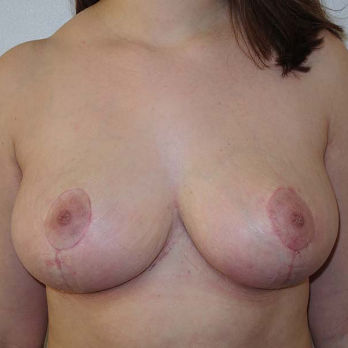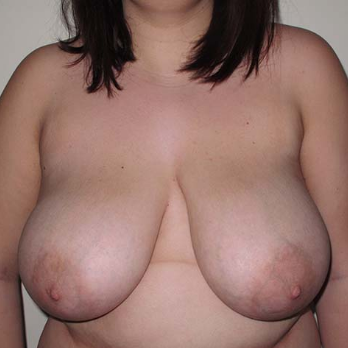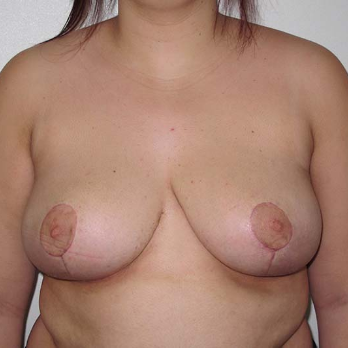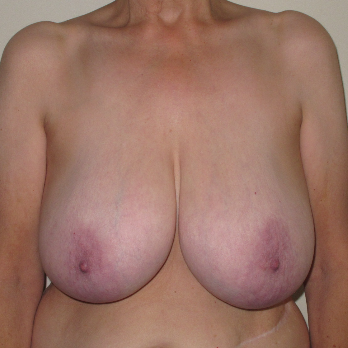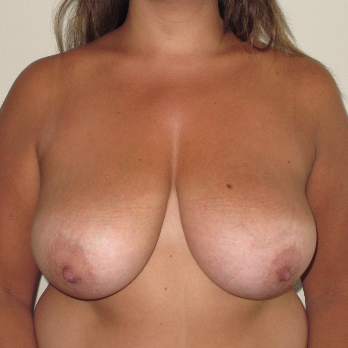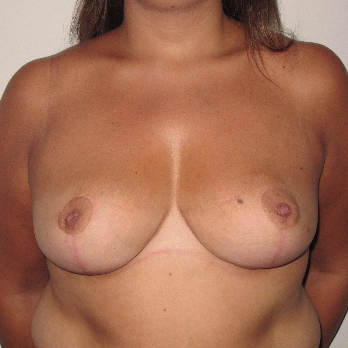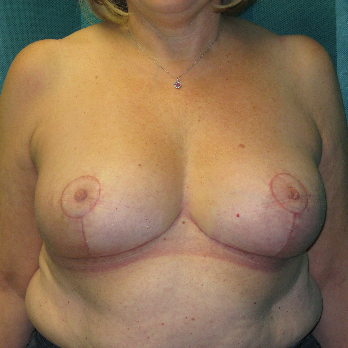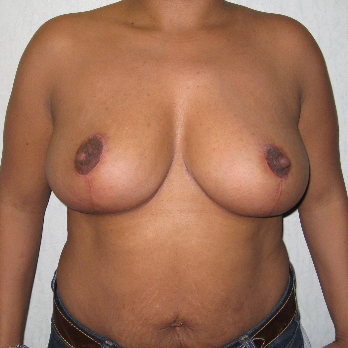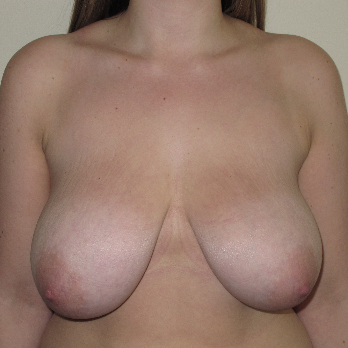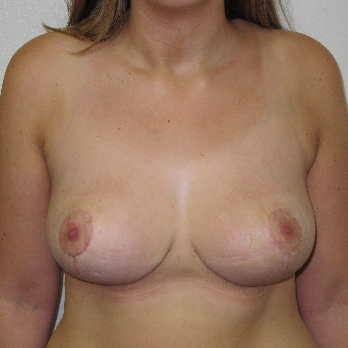
Breast reduction Surgery
Breast reduction Surgery5 makes the breasts smaller and improves their shape while at the same time the nipple is lifted to a higher position. Many women with large breasts are extremely self concious about them. Aside from physical problems such as backache, neck pain and skin conditions, they can prohibit activity in sports, effect sleeping patterns and make it difficult to wear fashionable clothes. And because of their obvious sexual nature, large breasts can also be a great cause of personal distress, as they attract unwanted attention.
At the same time, the ageing process, the menopause, use of HRT and excessive weight loss can also cause drooping and misshaped breasts. Breast reduction surgery will remove fat, tissue and skin, lift up and reshape the breasts to a smaller size and reposition the nipples to their correct position. As one of London's best plastic surgerons, Mr Chana uses a rapid recovery technique for the procedure which means you will only stay in hospital for the day and there are no drains used.
There are essentially two main forms of techniques to perform a breast reduction :
- A pedicle technique:- This is the most common procedure which involves elevating the nipple on a stalk of tissue called a pedicle. Breast tissue is removed while maintaining the pedicle and the nipple elevated on this pedicle to a higher position. The skin closure results in an 'anchor' shape scar which runs around the nipple, vertically downwards and horizontally in the crease under the breast.
- A free nipple graft: - This procedure is only for patients who have gigantic breasts where the nipple cannot be maintained on a pedicle but has to be removed and then replaced a skin graft. The scar is the same 'anchor' shaped scar. Very few patients will need this procedure.
On this page you can read more below about breast reduction surgery , what to expect, the recovery and view photographs with videos about the procedure.
The breast reduction surgery consultation
At your initial consultation with Mr Chana, he will talk to you about why you are considering surgery and what you want to achieve out of it. He will assess your medical history, examine your breasts and guide you through the breast reduction procedure very carefully.
He may want to take photographs of your breasts to use as reference and help him in planning your surgery. A number of important decisions will need to be made with respect to the shape and size of the breast you want.
This important discussion will involve an explanation of the scars resulting from the surgery and the resulting size of the breasts after surgery. It is not possible to provide an exact prediction of the new size of the breasts since this becomes an estimation during surgery. It is certainly not pssible to predict an exact cup size but after discussing your goals a plan can be made to reach as close to to your ideal size. Often but this can be explained with a better understanding of your expecations from showing photographs of other patients who have had breast reduction procedures.
Is the nipple lifted during the breast reduction surgery ?
Large breasts are characeterised by a low nipple which has drooped with the weight of the breast. The nipple often lies below the level of the crease under the breast. This is always lifted as part of the breast reduction. Therefore, a breast reduction always involves a nipple lift. You can view a video with a full explanation in the video section below.
The breast reduction scars
The scars from the breast reduction are often described as an 'anchor' shape. They extend around the nipple, vertically downwards and horizontally in the crease under the breast. In the beginning the scars are red in appearance but gradually fade over a period of months. It can be over a year before the scars fully settle and are fully matured . In the long term and best case scenario one would expect relatively thin white lines and soft pliable scars. However, it is important to remember individual scarring may vary and the underlying genetics has an important part to play in scar formation.
All the relevant advice in terms of post surgery scar management will be provided and it it is important to follow this advice.
How long is Breast Reduction surgery ?
The actual surgery itself takes approximately 2 hour to 2 and a half hours. Small breast reductions may take slightley less time and larger breast reductions may take slightly longer. With Mr Chana's experience and a rapid recovery technique for the surgery it means you can go home the same day after surgery. In many cases this willbe just a few hours after the procedure.
The techniques for breast reduction surgery
There are two main techniques for breast reduction which are either a 'pedicled' technique or a 'free nipple graft'. The vast majority of patients will be suitable for a pedicle technique where the nipple remains attached to a stalk of breast tissue and is not removed. In extremely rare cases where there is a gigantic breast size such a pedicle will not sustain an adequate blood supply and in these rare cases the nipple is removed and then replaced as a graft. Even in very large breast sizes Mr Chana uses techniques can be employed to maintain the blood supply to the nipple and avoid the nipple having to be removed. These methods include keeping the pedicle very thick and a specialised superior pedicle technique which has a better blood supply from the chest wall blood vessels. In this way specialised techniques can be used and free nipple grafts can be avoided in all but the very rare isolated cases.
Mr Chana prefers to use this specialised superior pedicle technique since this helps to provide better upper pole fullness and avoids bottoming out of the breast in the long term. The commonest technique utilised by plastic surgeons uses an 'inferior' pedicle but this has a higher risk of dropping in the long term since the pedicle is based at the bottom of the breast with less support. A superior pedicle is 'suspended from the upper part of the breast and does not tend to cause this bottoming out change in shape and provides a better long term maintenance of shape
The breast reduction surgery procedure
Before surgery, Mr Chana will explain the exact procedure he will be performing on you. He will draw markings on your breasts which determine the degree of nipple lift and the amount to breast tissue to be removed. This will be his guide throughout the operation and sets the plan for the surgery. These markings are very important also because the breast position changes as you lie flat for the surgery and the markings are the most important guide. During the procedure you are positioned to about a 45 degree sitting position to help with the positioning of the breast.
Breast reduction surgery involves first lifting the nipple into a new position. It will not be fully removed, but left attached to breast tissue so it remains 'alive' with a blood source. Excess breast tissue is then removed from above, below and around the nipple and areola (the pattern of scarring will be discussed with you prior to surgery) and the skin and tissue that is left, reshaped into a new breast. The nipple will be stitched into its correct position.
There are different types of breast reduction that are determined by the shape of your breasts and body and how much of a reduction you require. In all cases there will be a scar around the nipple and a further scar which runs vertically down from the nipple to the crease under the breast. A further scar is also required running horizontally in the crease under the breast (although in smaller breast reductions this can be avoided).
In order to aid recovery and minimise discomfort, Mr Chana uses a fibreoptic light in sugery to stop all bleeding points inside the breast. This avoids drains having to be inserted which results an enhanced recovery. You can watch how this procedure is performed in the video below. Please be aware there is some surgical content in the video.
What can I do to help?
The best thing any patient can do, is to be as healthy as possible going into an operation. Keep up with regular excercise, and ensure your weight is not excessive. A high body mass index over 30 results in a high risk of complications and surgery will be denied. If you are concerned about your weight, set out on a plan to reduce it and get it under control. Of your If you smoke, stop at least six weeks prior to surgery, as this will help limit post-operative complications.Similarly you should be off all nicotine supplements and vaping substances.
Recovery after breast reduction surgery
Mr Chana uses a rapid recovery technique which means you should have minimal discomfort with a quick immediate recovery after surgery and a be able to go home the same day. Watch the video below of a patient just after surgery !
Following surgery, there may be discomfort and mild pain, but this can be easily controlled by mild analgesic tablets which Mr Chana will prescribed. Aspirin or aspirin-like medication (non-steroidal, anti-inflammatory tablets) must not be taken.
After breast reduction surgery, you should avoid bending over or doing any activity for at least a week or so to reduce the swelling. Sleeping upright with a few pillows in the first week after surgery also . helps reduce the swellingSports or vigorous activity should not be returned to for at least 6 weeks, or until you feel able. . Most of the swelling will settle in a couple of weeks once the bandages have been removed.
You should also be aware that your new breasts may look bruised but this will disappear after 2-3 weeks. After surgery, the skin adjacent to the incision can sometimes appear slightly ‘pleated’ but this will flatten out over a few months. Scars can take 12 to 18 months to fully heal.
Wearing a tight bra with an underwire is uncomfortable and may irritate the scar under the breast. Therefore, a sports bra is advised for the first 6 weeks.
Immediately after surgery, your new breast size will be apparent but with some swelling , but the final shape and size won't be fully seen until around six months.
The risks associated with breast reduction surgery
Serious complications after breast reduction surgery are rare.
Infections around the wound can be easily treated with antibiotics prescribed by Mr Chana. Excessive bleeding or a haematoma (a swelling of clotted blood) are unusual, but can be successfully treated. Should they persist, a further operation may be required but this is particularly rare. Mr Chana and his team will be on hand throughout your recovery should you feel unwell or be concerned about something.
There will be scars from the surgery. These will be red at first and then slowly change to purple as the healing process begins. They should fade after about 18 months. In the event of pleats or 'dog ears' forming along the scar, they can be easily corrected at a later date.
Two important consequences to bear in mind following breast reduction surgery are that you are likely to suffer a loss in nipple sensation (this can return over time, although some women may lose sensation altogether) and that you may loose the ability to breastfeed in the future.
Most women too, have some degree of asymmetry with their breasts and even after reduction surgery there may still be some asymmetry.
Mr Chana will provide you with a comprehensive information leaflet on breast reduction surgery at your consultation.
Is a breast reduction right for me?
What age can a breast reduction be carried out?
Are there different types of breast reduction surgery?
Can the scars be limited with a breast reduction?
Can I choose the cup size with a breast reduction?
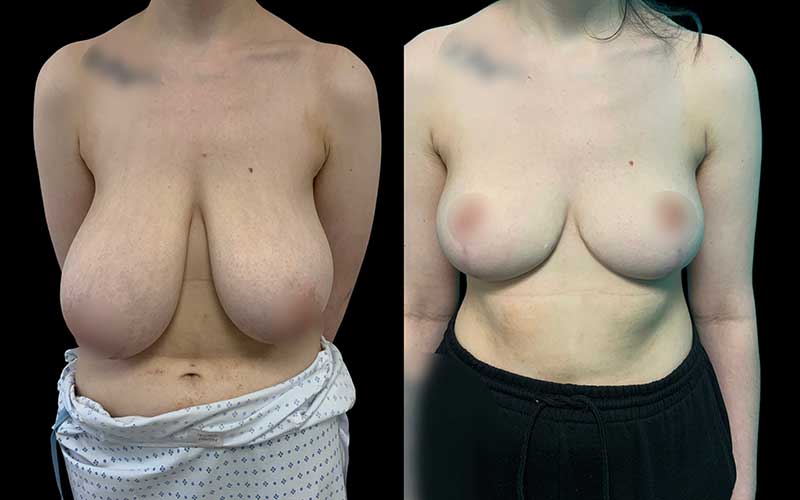
|
|
Is the nipple removed during breast reduction surgery
> See article
|
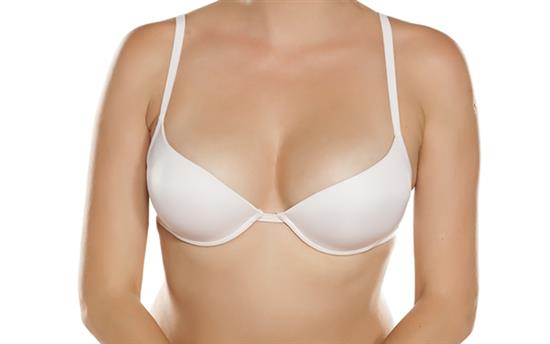
|
|
What are the Benefits of Breast Reduction Surgery?
> See article
|

|
|
Breast reduction Surgery vs Breast lift Surgey
> See article
|

|
|
Breast Reduction Q&A’s with Dr Jag Chana
> See article
|

|
|
Tennis Junior Champion has breast reduction surgery
> See article
|

